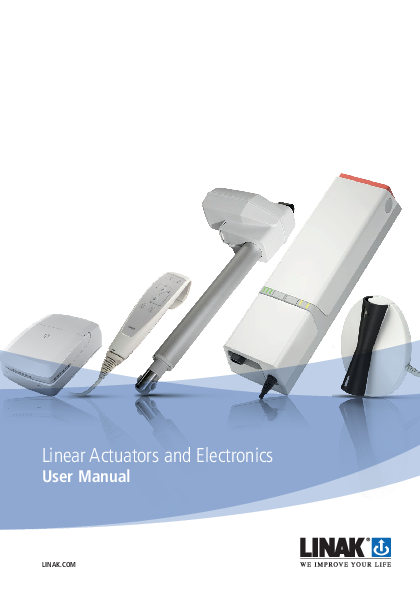About This Manual
This manual serves as a crucial resource for understanding the capabilities and proper application of LINAK products. It details system descriptions, operational guidelines, specific actuator and control box information, and troubleshooting advice.
Key Features and Information
- System Overview: Learn about the fundamental construction, warranty periods, and IP protection degrees of LINAK actuators.
- Safety and Compliance: Understand important safety warnings, EMC directives, and FCC/IC statements relevant to LINAK products.
- Product Range: Detailed information is provided for various LINAK product lines, including DESKLINE®, HOMELINE®, MEDLINE® & CARELINE®, and TECHLINE® actuators, as well as a wide array of control boxes, controls, and accessories.
- Troubleshooting: Find guidance on common issues and solutions for actuators, lifting columns, and electronics.
LINAK Commitment
LINAK is dedicated to providing high-tech, reliable solutions based on years of experience. LINAK systems undergo rigorous testing to ensure quality and performance. For support and service, LINAK subsidiaries and authorized distributors worldwide are available to assist.
For more information, visit LINAK.COM.
